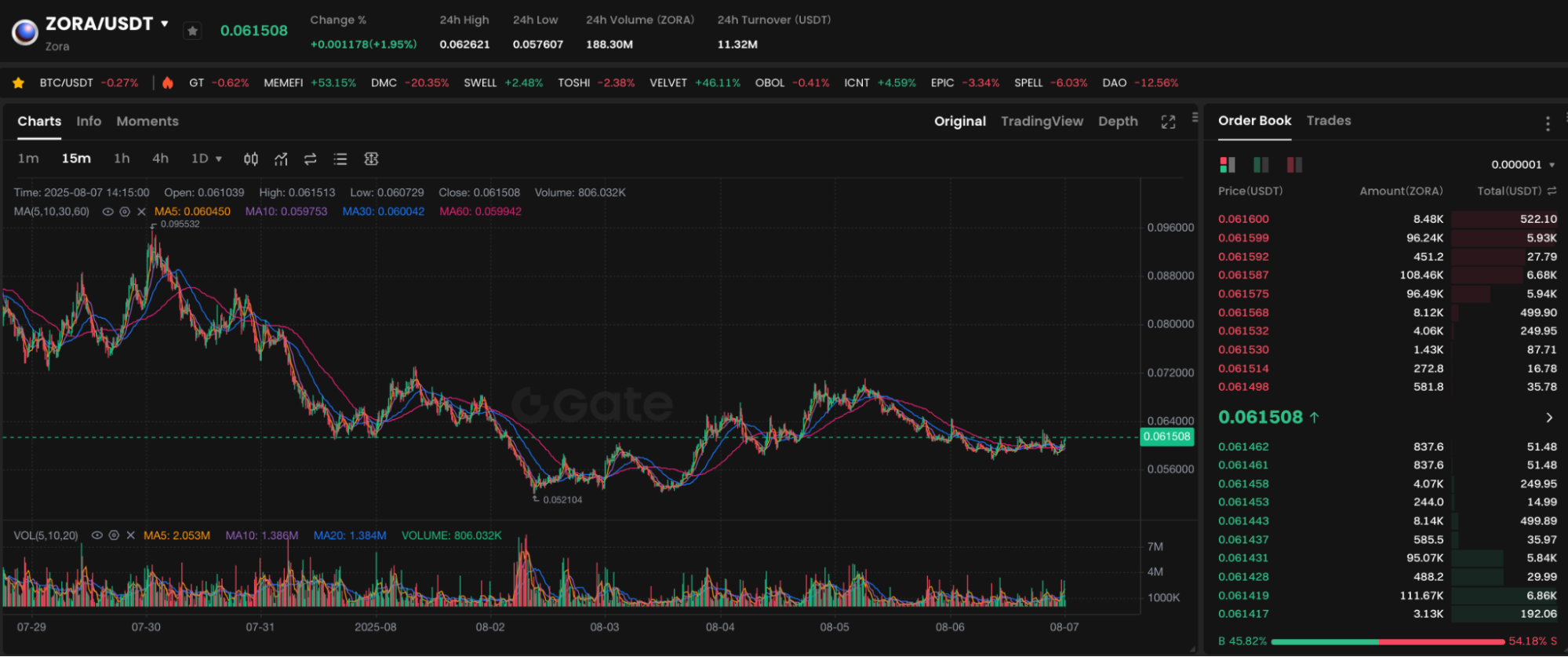ZORA Price Prediction: Current Performance and Short-Term Trend Analysis
What is ZORA?
ZORA is an infrastructure protocol for the creator economy and NFT application development, and has recently gained traction alongside the growing popularity of the Base chain. Its suite of on-chain tools enables users to create tokens, mint NFTs, and launch marketplaces. Thanks to its streamlined and open architecture, ZORA has become the go-to platform for many emerging community projects.
Following the launch of the ZORA token, it quickly drew significant market attention and established itself as a major player in the multi-chain social ecosystem.
Recent Price Performance Review

Chart: https://www.gate.com/trade/ZORA_USDT
At present, ZORA trades around $0.06, with daily volume hovering near $80 million, reflecting strong liquidity. However, the weekly chart shows a pullback of over 20% from recent highs, signaling a shift toward caution or bearish sentiment in the short-term market.
The candlestick pattern shows a bearish engulfing formation at the local top, and rebound momentum is fading. Simultaneously, trading volume is declining, indicating weakening buying interest.
Short-Term Technical Analysis
Currently, the price is consolidating within the $0.059–$0.061 range. If it fails to break above this range, ZORA may retest previous support at $0.048.
The short-term RSI is in the neutral-to-lower band but has not triggered a strong buy signal. The MACD lines are converging, suggesting that downward momentum continues in the short term.
Additionally, the short-term EMA is flat, indicating no clear trend. Trading activity over the next few days will be critical. It will determine whether ZORA continues its correction or stages a rebound.
Risk Notice and Trading Recommendations
For newcomers, this is not an optimal entry point. Although ZORA has strong ecosystem potential, technical analysis suggests that short-term risks have not yet fully played out.
Advice for new investors:
- Do not chase rallies at local highs; wait for a confirmed pullback before entering the market;
- If you hold ZORA, consider setting take-profit targets above $0.065 and stop-loss levels below $0.050;
- If you prefer to wait and observe, monitor on-chain activity, token concentration, and other fundamental metrics to identify strategic entry opportunities.
Summary
ZORA is an innovative project that combines social features with creator-focused tools. Despite its active ecosystem, the token price has shown weakness. Given the heightened short-term volatility, new investors should remain rational and avoid following the crowd. It is crucial to closely monitor key support and resistance levels for effective risk management.
Related Articles

Pi Coin Transaction Guide: How to Transfer to Gate.io

What is N2: An AI-Driven Layer 2 Solution

Grok AI, GrokCoin & Grok: the Hype and Reality

How to Sell Pi Coin: A Beginner's Guide

Crypto Trends in 2025
